Please Do Not Bend, Maggs Gallery
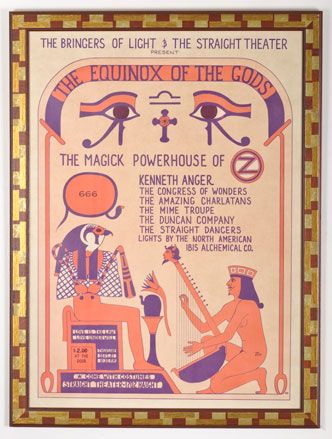
It’s almost facile to acknowledge that we live in an era where conformity, globalisation and standardisation are the norm. And yet, bare decades ago, a chaotic, countercultural movement convulsed and swept through Western society and politics. It shook every layer from literature and cinema to music and the arts.
The generic term counterculture refers, of course, to the intellectual, emotional and physical rejection of conventional social norms. Almost every age has experienced at least one countercultural movement; but in our lifetimes, the most famous occurred in the 60s. For those of us who weren’t there to celebrate the Age of Aquarius or for whom Woodstock, the Black Panthers and Che Guevera are fuzzy black and white images with funny hairstyles, it’s difficult to appreciate, let alone comprehend, the scale of that event. Especially since, just as quickly as it arose, the movement – with all its restless energy – was absorbed and appropriated into mainstream culture.
But physical memories remain, most tangibly in the vast quantities of posters, flyers, pamphlets and books that survive from that era. Happily, a lot of it seems to have ended up in the archives of London’s Maggs Bros, a dealer in antiquarian and rare books. Indeed, Carl Williams who heads up the Counterculture division of the firm’s modern department says the collection recently reached a critical mass. “Demographically, we had too much stuff from the 60s.”
This explains the absorbing selling exhibition that opens today at the Maggs Gallery. With no obvious unifying theme – other than agitation – Williams has curated a marvellously eclectic spread of over a hundred posters, illustrations, propaganda pamphlets and the like.
And so, a random search turns up an original Robert Lenkiewicz blue ink drawing of ‘The Seven Chakras of Power’; a rare poster recruiting for the Symbionese Liberation Army; a black and white photo portrait of Roel van Duyn, the co-founder of the Amsterdam Provo and Kabouter movements; a satirical Japanese baseball match poster commemorating the fortieth anniversary of Hiroshima and Nagasaki; and even a first edition ‘Consulting I Ching Smoking Pot Listening to the Fugs Sing Blake’ signed by Allen Ginsberg.
It’s a delightful mixed bag that, in Williams’s words, “ferments with a chaos of ideas”, but the exhibition’s real value, we think, is not just about its nostalgic look at the times that the documents record, but also in the design, typography and, dare we say it, packaging.
We asked Williams to tell us more about ‘Please Do Not Bend’ and what message the show seeks to impart.
Wallpaper* Newsletter
Receive our daily digest of inspiration, escapism and design stories from around the world direct to your inbox
Why have you decided to host this exhibition now?
I was surrounded by urban guerrillas, occultists, crazies, freaks, punks, space cadets and revolutionaries. The exhibition is a rearguard action to deplete their ranks.
Is counterculture an antidote to culture?
No, but it's a tonic for the Kulturtruppen.
Take us through some of your favourite items on show.
#12 is a mock invitation card to the 1970 Oz obscenity trial over the 'Schoolkids Issue' with a note on the back from Richard Neville, one of the co-editors, saying that he was on his way to court. The judge said that Neville’s co-accused Felix Dennis was too thick to warrant a long custodial sentence. Felix is a very happy cat now with £650 million in the bank. My other favourite is #25, a wild découpage from the 1850s by an unknown mad person or laudanum fiend full of apocalyptic images and inked blood. Evelyn Waugh had a complete one of these so called 'bloody books' that is now in the Harry Ransom Centre in Texas.
Does the exhibition have a message?
Yes, always send flat stuff in an envelope stamped "Please Do Not Bend"'
How has countercultural ephemera changed in the time you've been a specialist?
It’s moving away from the 60s rapidly and into the 70s as the age related demographic changes and the Big Lebowski makes way for the Big Rotten.
How have people's attitudes to it changed and does that say anything about 'culture' today?
It largely brings a smile to the face. Whereas, before, it probably brought a frown and a wrinkled brow and maybe even a custodial sentence.
How long have you worked at Maggs and how would you explain to someone you've never met what your job is?
For five years, I habitually said that I have worked here for about 2 years and that was about two years ago. I am a seller of used ideas.
Where (and when) did your interest in counterculture stem from?
Raincliffe Comprehensive, Scarborough, North Yorkshire circa 1982: we had a crass mock election. I formed an Anarchy Party, stencilled up the posters, ran on an anti-school ticket and won over the banned NF skins to vote for me by convincing them that their real problem was the headmaster not immigration. Much to the chagrin of my teachers, I nearly won and they had to disqualify 75 or so of the votes because they bore the circled 'A' of anarchism. Post-election, Labour sought an alliance. This was probably the first one between a mainstream socialist party and an anarchist group since the Popular Front with the CNT in late thirties Spain. '¡Venceremos!'
What single thing in the Maggs Counterculture archive do you hold most dear?
Today, the stock item I covet the most is a massive handmade appliquéd banner from the Spanish Civil War with the slogan "'¡Exterminar Las Ratas Fascistas!"
If you could get your hands on any one thing to add to your archive, what would it be?
Today, for stock I would love the roll manuscript for The Marquis's ‘120 Days of Sodom' that’s on loan to the Bodmer collection in Geneva. Yesterday, one of the two front and back volumes of Pierre Louys’s private photographic brothel journals in clandestine bindings. I would prefer the former. Tomorrow, who knows?
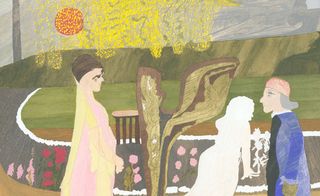
Gwenydd Powell, the young violinist and possible schizophrenic, committed suicide far too early and left a sheaf of disquieting drawings, paintings and writings on angels, fairies and occult troubles (circa 1915-1930) that are included in the show.
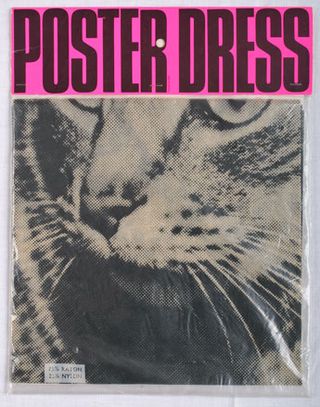
One of Harry Gordon’s famous paper dresses in the original bag, made in London in the turbulent year of 1968.

Hannah Hoch’s expressionist watercolour view of a church from 1917. A short time later she would go on to invent Dadaist photomontage with Heartfield.

A poster for a John Latham Skoob ’happening’ (where discarded books were piled and burnt) in London’s Inner Temple in 1966. ’Skoob’ is books backwards, the illustration is of a column of books burning.
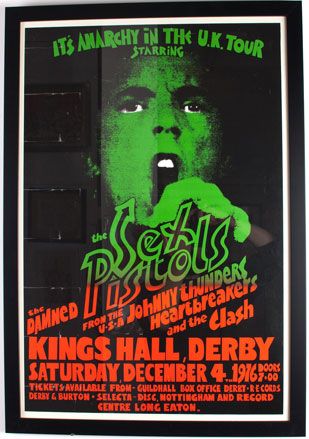
A very powerful poster in horror movie colours for a canceled show from the important Anarchy In The U.K. tour, 1976. The Sex Pistols. The Damned, The Clash and Thunders refused to play under threat of a morals review committee of local Derby worthies.

A wild découpage from the 1850s by an unknown mad person, full of apocalyptic images and inked blood. Evelyn Waugh had a complete one of these so-called ’bloody books’ that is now in the Harry Ransom Centre, Texas.

A mock invitation card to the 1970 Oz obscenity trial over the ’Schoolkids Issue’ with a note on the back from Richard Neville, one of the co-editors, saying that he was on his way to court. The Judge said that his co-accused Felix Dennis was too thick to warrant a long custodial sentence.
ADDRESS
Maggs Gallery
50 Hays Mews
London W1J 5QJ
Daven Wu is the Singapore Editor at Wallpaper*. A former corporate lawyer, he has been covering Singapore and the neighbouring South-East Asian region since 1999, writing extensively about architecture, design, and travel for both the magazine and website. He is also the City Editor for the Phaidon Wallpaper* City Guide to Singapore.
-
 Monospinal is a Japanese gaming company’s HQ inspired by its product’s world
Monospinal is a Japanese gaming company’s HQ inspired by its product’s worldA Japanese design studio fulfils its quest to take Monospinal, the Tokyo HQ of a video game developer, to the next level
By Ellie Stathaki Published
-
 Fenix and Federica Sala Challenge Designers to double up
Fenix and Federica Sala Challenge Designers to double upCurator Federica Sala and innovative interiors material brand Fenix's Design Duo Double Feature project brings three design duos together to create dual-purpose furniture
By Ifeoluwa Adedeji Published
-
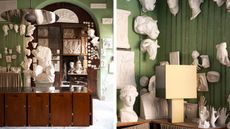 Interni Venosta is a new furniture brand by the Dimorestudio founders
Interni Venosta is a new furniture brand by the Dimorestudio foundersLaunched at Milan Design Week 2024, Interni Venosta is Dimorestudio Britt Moran and Emiliano Salci's new brand, crafted by Tuscan manufacturer Fabbri Services and paying homage to 1970s Italian design
By Rosa Bertoli Published